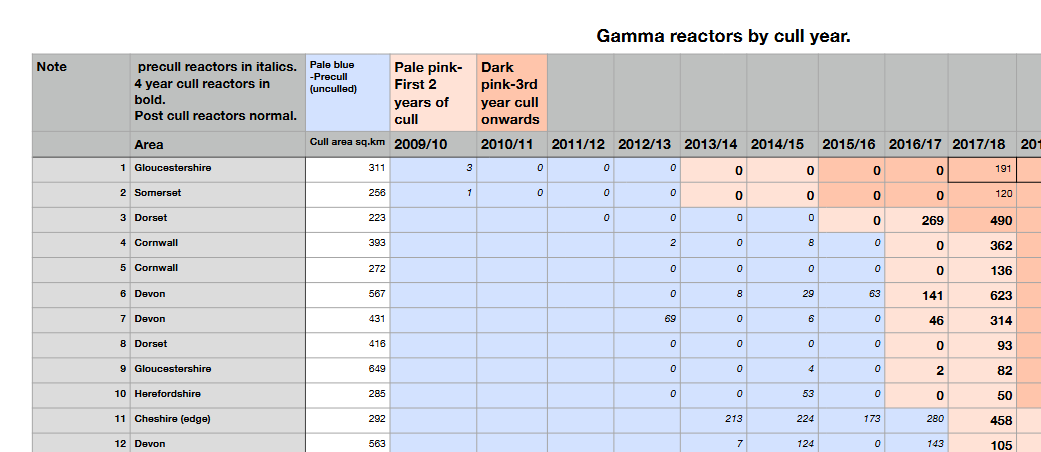Why was the use of Gamma interfreon testing, alongside use of the tuberculin test (SICCT), under-declared in APHA’s central bovine TB control evaluation paper (Birch et al 2024) last year, and also in the newly published ‘Godfray’ report?

A letter published today 19th September, in Veterinary Record, details the amount of supplementary Gamma testing that was introduced in the High Risk and Edge Areas before and during the post 2013 mass badger culls. It shows how Gamma testing was under-emphasised in the Birch et al. analysis on the effect of the poorly labelled ‘Badger Control Policy’, (see here). Considerable disease benefit is being claimed for badger cull in its first two years and beyond, but is far more likely to simply be linked to the increase in cattle testing with Gamma, as recorded publicly by number of gamma test reactors found.
What this shows is that Defra knew well that Gamma could find undisclosed infection, no surprise as it has been used in other countries for decades. They used it to help lower the spread of disease, then purposefully eased off, as badger culling was phasing down in more recent years. Who, you have to ask, was controlling this behaviour? And why?
As Badger Crowd has pointed out before (see here), all disease measures implemented, including extensive testing, were analysed together, with no control areas. There was no comparison of culled and unculled areas as the recent Godfray Review very strangely mis-reported.
Data presented with the Vet Record letter shows how easing off of the use of Gamma testing to supplement SICCT testing in 2022 is likely to have hindered disease control. This reduction in Gamma was said to be due to lack of EU funding, but this was surely predictable. So why were farmers and the public not told that the strategy was being derailed? A freedom of information disclosure in April 2025 concerning the likelihood of
bTB freedom being achievable under present conditions of testing and cattle controls, produced the following response: ‘APHA has not yet produced models suitable for predicting whether TB eradication will be achieved in England by 2038, or when TB eradication will be achieved.’ The 25-year bTB eradication strategy published in 2014, with a 2038 projected target of bTB freedom (elimination or near elimination) now, on current trajectory, has an end point beyond 2060.
As has been pointed out many times before, there is an urgent need for the use of other immune-assay tests and phage testing to be authorised alongside SICCT and Gamma IFN-γ tests, and for farm vets to be provided with extensive new advice and guidance. With freedom to test bTB out from herds – this is mentioned in the Godfray report but it should have been front and centre.
The money raid on central government funds requested in the Godfray review would have been credible with a report triaging essential priorities. But instead, like the 2018 report, the 2025 report is muddled and incoherent. Progress, especially in England, Northern Ireland and the Republic of Ireland simply will not materialise if Defra continue along his line.
References
Birch et al (2024)
Langton, Griffiths & Griffiths (2025)
Discover more from The Badger Crowd - standing up for badgers
Subscribe to get the latest posts sent to your email.

